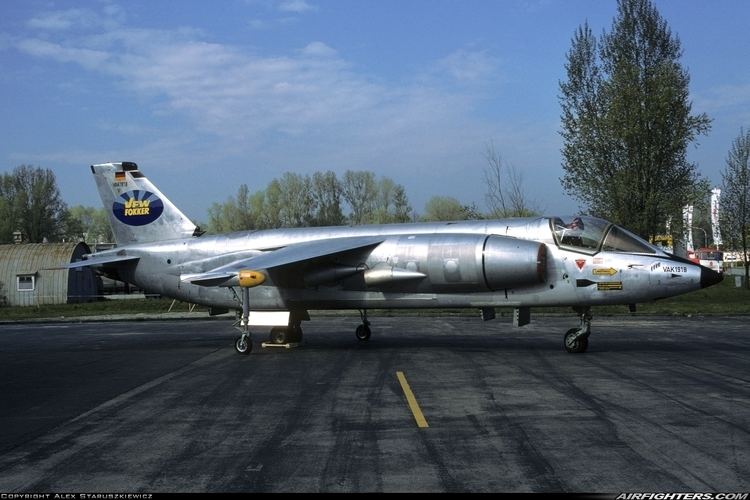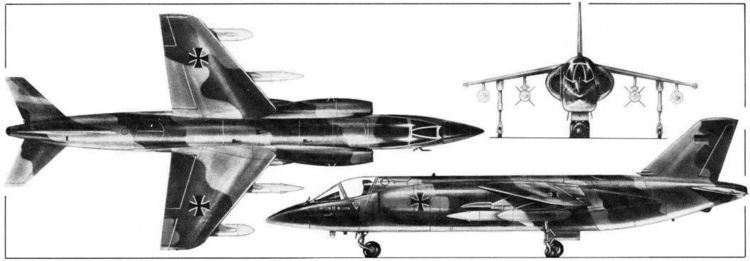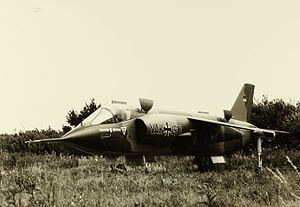Top speed 1,108 km/h Wingspan 6.17 m Number built 3 | Range 400 km Length 16 m First flight September 20, 1971 | |
 | ||
Engine types Rolls-Royce RB162, Rolls-Royce/MAN Turbo RB193 | ||
Vfw vak 191b experimental aircraft
The VFW VAK 191B was an experimental German VTOL nuclear strike fighter of the early 1970s. Designed and built by the Vereinigte Flugtechnische Werke (VFW), it was intended to lead to a replacement for the Fiat G.91.
Contents
- Vfw vak 191b experimental aircraft
- Design and development
- Aircraft on display
- Operators
- Specifications VAK 191B
- References

Design and development

The VAK 191B was produced by the German company Vereinigte Flugtechnische Werke (VFW) a company formed by Focke-Wulf and Weser-Flugzeugbau. Initially, Fiat of Italy was also involved but Italy withdrew from the joint development agreement with Germany in 1967, and Fiat remained as the major sub-contractor producing wings, tailplanes and some of the fuselage. The initial programme called for three single-seater and three two-seater, but was first altered to six single-seater aircraft, and then was further cut to only three aircraft.
VAK was the abbreviation for Vertikalstartendes Aufklärungs- und Kampfflugzeug (V/STOL Reconnaissance and Strike Aircraft).

Propulsion was provided by a Rolls-Royce/MAN Turbo RB.193-12 vectored thrust engine for both lift and cruise which was augmented by two Rolls-Royce vertical lift engines.
The program was begun in 1962 to replace the Fiat G.91 ground attack fighter with a VTOL aircraft as part of NBMR-3 but NATO requirements changed and it became a technology demonstrator.

With a new project appearing - the German/American "Advanced Vertical Strike" (AVS) fighter - the VAK was "reclassified as an experimental programme"

Three VAK 191B aircraft were flown in the flight test program between 1970-1975 making 91 flights. The first hovering flight was made in Bremen on 20 September 1971. The first transition from vertical flight to horizontal and vice versa was achieved on 26 October 1972 in Munich.
The prototypes were used to test some of the concepts in for the European MRCA programme (which led to the Panavia Tornado) including 'fly-by-wire' technology.
The VAK 191B was similar in concept to the British Harrier, but was designed for a supersonic dash capability (Mach number 1.2-1.4) at medium to high altitudes. It was judged that having a single engine would create too much drag, but the two lift engines were dead weight in cruise, and the small cruise engine gave a poor thrust to weight ratio. It also had very small highly loaded wings. By contrast, the Harrier had a much higher thrust-to-weight ratio, it was effective as a dogfighter, and had larger wings which were put to good use in rolling short takeoffs.
Aircraft on display
Operators
Specifications (VAK 191B)
Data from {X-Planes and Prototypes}
General characteristics
Performance
